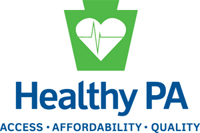Medicaid Expansion Glitch Hits Drug and Alcohol Patients, Providers
A flaw in the implementation of Pennsylvania’s Medicaid expansion has left many of the state’s Medicaid beneficiaries with no coverage for the treatment of their drug and alcohol problems – and some providers without payment for some care they have delivered.
 Under the Healthy Pennsylvania Medicaid expansion program, beneficiaries with extensive health problems, like drug and alcohol issues, were supposed to be directed into the state’s “Healthy Plus” Medicaid benefits package, which covers services that address such problems. Instead, many were places in private, state-approved insurance plans for Medicaid beneficiaries, which do not cover those services.
Under the Healthy Pennsylvania Medicaid expansion program, beneficiaries with extensive health problems, like drug and alcohol issues, were supposed to be directed into the state’s “Healthy Plus” Medicaid benefits package, which covers services that address such problems. Instead, many were places in private, state-approved insurance plans for Medicaid beneficiaries, which do not cover those services.
State officials are aware of the problem and say they will soon have a plan to fix it.
Learn more about this glitch in Pennsylvania’s Medicaid expansion and how state officials hope to address it in this Philadelphia Inquirer article.





